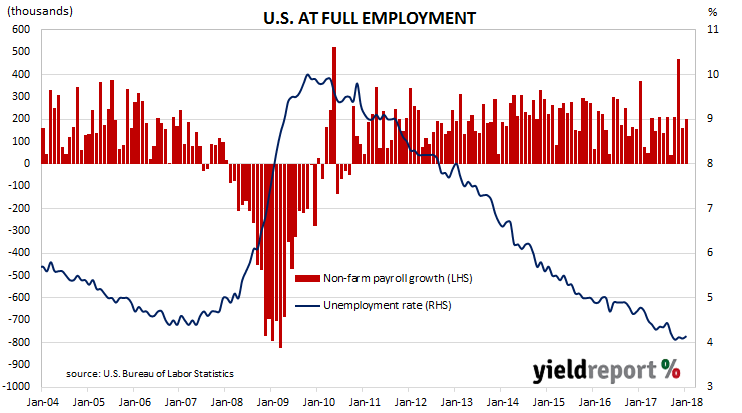The U.S economy has produced another month of robust job creation and kept the U.S un-employment rate at its lowest level since February 2001. According to the U.S. Bureau of Labor Statistics, the U.S. economy created 200,000 jobs in the non-farm sector in January while December’s figure was revised up from +148,000 to +160,000 but the November number was revised down from +252,000 to +216,000. The market’s median expectation for employment growth in January was +180,000.
U.S. financial markets initially reacted by sending yields higher before they retraced. By the end of the day, 2 year yields were 2bps weaker at 2.14% while the 10 year yield increased by 5bps to 2.84% and 30 year yields were 7bps higher at 3.09%. The U.S currency was stronger against all major currencies, including the Aussie. According to cash futures prices, the implied probability of a rate rise by the U.S. FOMC at its upcoming March meeting slipped back from around 79% to 76%.

After revisions to previous months’ figures, the unemployment rate remained unchanged at 4.1% as the total number of unemployed people grew by 108,000 while the total number of people employed in both the farm and non-farm sectors grew by 409,000. Average hourly pay rates increased by 0.3% for the month and 2.9% for the 12 months to January.
The total number of employed persons in the non-farm sector at the end of January was 147.8 million and 154.4 million overall. Over the past twelve months, 2.4 million jobs have been created in the U.S. with around 90% of them in the non-farm sector. Another figure which is indicative of the state of the U.S. economy is the employment-to-population ratio. After a volatile few months, this ratio has settled down at 60.1% for a third month in a row.

